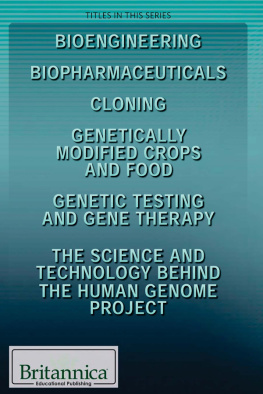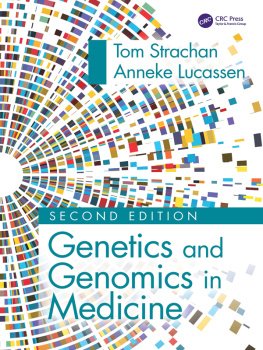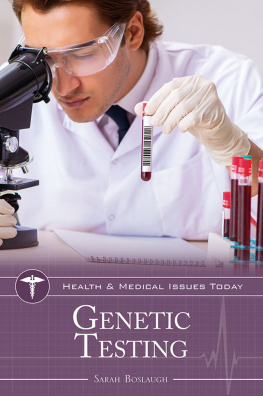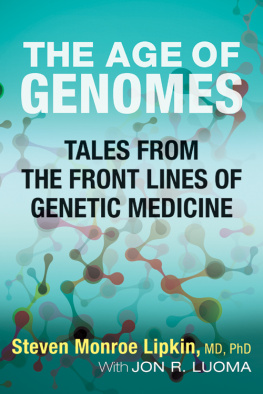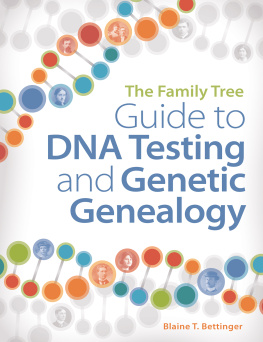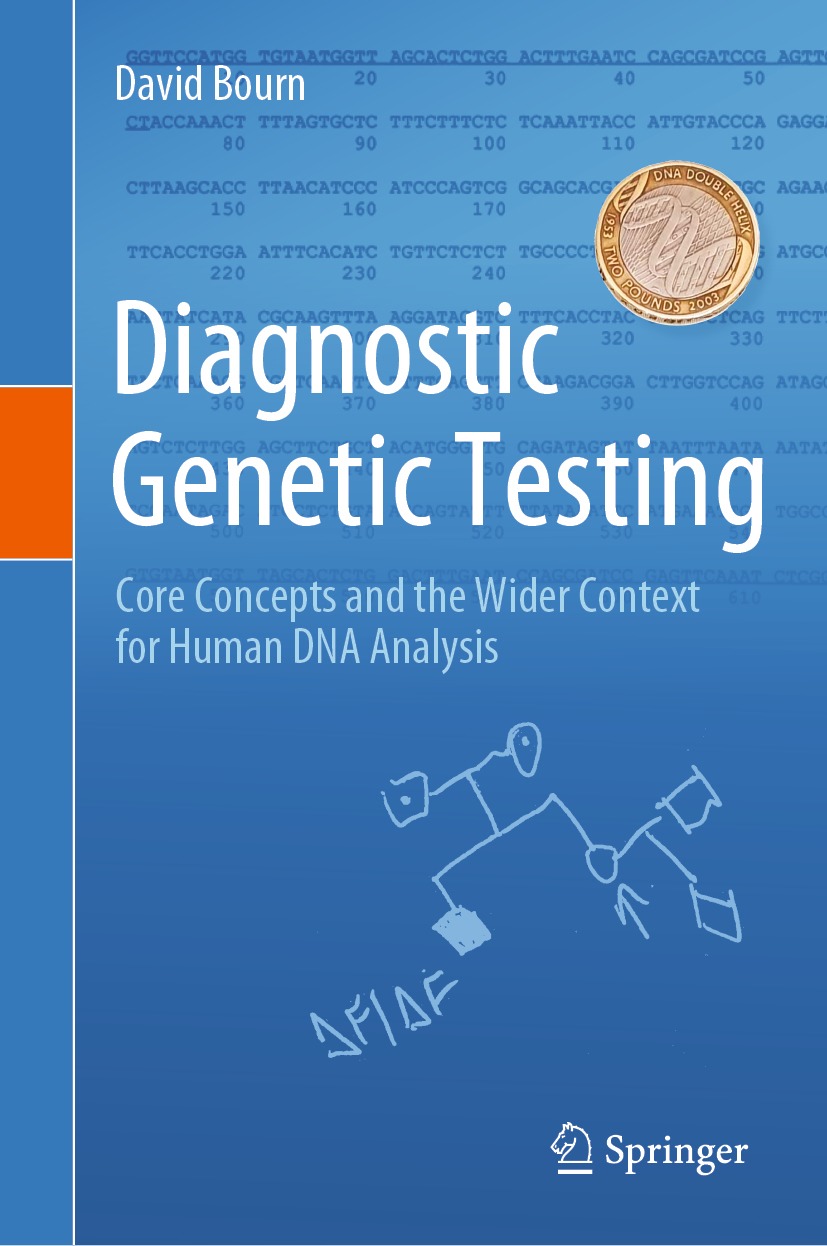David Bourn
Diagnostic Genetic Testing
Core Concepts and the Wider Context for Human DNA Analysis
1st ed. 2022

Logo of the publisher
David Bourn
Northern Genetics Service, Newcastle upon Tyne, UK
ISBN 978-3-030-85509-3 e-ISBN 978-3-030-85510-9
https://doi.org/10.1007/978-3-030-85510-9
The Editor(s) (if applicable) and The Author(s), under exclusive license to Springer Nature Switzerland AG 2022
This work is subject to copyright. All rights are solely and exclusively licensed by the Publisher, whether the whole or part of the material is concerned, specifically the rights of translation, reprinting, reuse of illustrations, recitation, broadcasting, reproduction on microfilms or in any other physical way, and transmission or information storage and retrieval, electronic adaptation, computer software, or by similar or dissimilar methodology now known or hereafter developed.
The use of general descriptive names, registered names, trademarks, service marks, etc. in this publication does not imply, even in the absence of a specific statement, that such names are exempt from the relevant protective laws and regulations and therefore free for general use.
The publisher, the authors and the editors are safe to assume that the advice and information in this book are believed to be true and accurate at the date of publication. Neither the publisher nor the authors or the editors give a warranty, expressed or implied, with respect to the material contained herein or for any errors or omissions that may have been made. The publisher remains neutral with regard to jurisdictional claims in published maps and institutional affiliations.
This Springer imprint is published by the registered company Springer Nature Switzerland AG
The registered company address is: Gewerbestrasse 11, 6330 Cham, Switzerland
For Claire, Rachel and Stephen (in alphabetical and inverse height order)
Foreword
Genetic testing has been used by healthcare services since the 1960s when it was initially confined to looking for chromosome abnormalities down the microscope. DNA studies came to the fore in the 1980s, at first offering indirect testing by genetic linkage analyses, and subsequently direct analyses by DNA sequencing of disease-associated genes. The Human Genome Project (HGP), a huge international endeavour that began in 1990 and took 13 years, at a cost of $3 billion, has enormously extended the possibilities for genetic testing. By providing a genome-wide human DNA reference sequence, it permitted for the first time genome-wide studies that we now call genomics.
Now lets fast forward to the present day. What has changed? In a word, everything. DNA sequencing technology has advanced so rapidly that what took the HGP 13 years and cost $3 billion can be achieved today in just one day and for a few hundred dollars only. The era of personal genome sequencing, begun in 2007, is now in full flight and accelerating. Current estimates indicate that of the order of 60 to 160 million humans will have their genomes sequenced by 2035. Plans for neonatal genome screening have also been considered in some countries and may be implemented following public consultation.
As genomes become readily available for analysis, so the scope of genomics and the nature of genetic testing are being transformed. Genome sequencing is beginning to transition to routine health care and national genomic medicine services have begun, or been planned, in several advanced countries. An agenda of mainstreaming genetics envisages that any branch of healthcare practice should be sufficiently versed in the implications of particular genetic tests to offer such tests directly to their patients.
With any technological leap, comes not just hope, but challenges. Take sequence interpretation. In genetic testing, comparison of the DNA from the person being tested against a control reference human DNA sequence helps to identify a damaging DNA variant associated with disease. That can sometimes be difficult at the gene level, but at the genome level, there may be millions of changes in the test sample when compared with the reference sequence. Some of the changes may be difficult to interpret; others may turn out to be ones associated with a completely different disease than the one for which the test was ordered.
Direct-to-consumer genetic testing services are also now being offered by different companies, bypassing healthcare services altogether. Ethical issues are important in all types of genetic testing (because unlike other types of medical test, genetic tests may have consequences for close relatives in addition to the person being tested), but can be expected to be especially so in genome-wide testing.
Prof. Tom Strachan FRSE FMedSci
September 2021
Preface
The primary aim of this book is to introduce some of the most important concepts underlying genetic testing, in families with inherited conditions and in patients with cancer. Specific examples of gene testing have been chosen with a view to illustrating particular themes. Many other examples could have been used; this is by no means an exhaustive treatment of diagnostic genetics, but hopefully the key details are still captured. The secondary aim is to provide some broader context, going beyond details of the laboratory work. In addition to the immediate implications for the patients being tested and their families, there are wider consequences to be considered. The specific scientific content on genes and genetics is largely uncontroversial (where there are uncertainties this should be explicitly stated). The division between this reliable information and my own views should be clear, and in this sense, the book can be said to be both good and originalbut as Samuel Johnson (almost) put it, the good parts are not always original and the original parts not necessarily good.
Any technical terms used are defined either in the main body of the book or in the additional material provided in the footnotes. Occasional boxes scattered through the chapters are used to convey more complex information, or to supply material that extends the themes covered in the main text. Key laboratory methods used in DNA analysis are introduced, but rather than listing extensive technical details, the emphasis is on an attempt to provide a broad understanding of how and why these methods are used. Detailed information can be accessed via the selection of reliable and well-curated websites listed below. Together these should provide links to a comprehensive body of resources covering the scientific basis of the techniques used for genetic analysis, specific details on genetic disorders, general discussions on the role of genetic testing in healthcare, and support groups for patients and their families.
Further Reading
Laboratory Techniques
The Lab Tests Online site provides an overview of the methods used with copious links to more detailed information. There are many other websites going into as much detail on specific techniques as could possibly be required, frequently including animations that help to make sense of the more complex methods.



